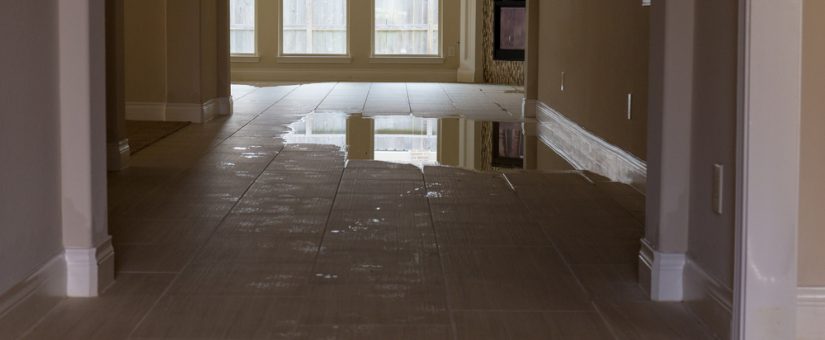What're your thoughts and feelings on How Fast Water Damage Can Ruin Your Home?

Leaks not only trigger waste of water however can likewise cause unnecessary damage to your house as well as advertise undesirable natural development. However, water leakages could go undetected given that the majority of the pipework in our home is concealed. By looking and comprehending for everyday situations that create leakages, you can shield your house from future leaks and also unneeded damages. Today, we will look at six leakage creates that may be causing your pipelines to trickle.
Instantaneous temperature level changes.
Severe temperature level modifications in our pipelines can create them to increase and acquire all of a sudden. This expansion and contraction may trigger cracks in the pipes, especially if the temperature are below freezing. It would be best if you kept an eye on exactly how your plumbing works. The presence of the formerly discussed scenarios often suggests a high danger.
Rusty water systems
As time goes by, your plumbing system ages and rust such as corrosion might start eating away the pipes. This may be the cause of staining or bending on your water pipes. This calls for an inspection with your plumber right away. Think about changing the pipelines because they are at a greater threat of corrosion than the newer designs if our plumbing system is old.
Malfunctioning Pipeline Joints
The factor at which your pipes connect is regularly the weakest web link in the waterline. Pipeline joints can wear away with time, causing water leaks. Unfortunately, most of pipeline joints are not conveniently visible. If you have noisy pipes that make ticking or banging noises, particularly when the hot water is activated, your pipeline joints are probably under a great deal of stress. It is recommended to have your plumber inspect your system annually.
Encroaching origins
Most water leaks begin outside the house instead of inside it. If you notice an unexpected decline in water pressure, state in your faucet, take time to go out and examine your backyard. You might notice wet patches or sinkholes in your lawn, which might mean that tree roots are getting into water lines triggering water to leak out. You can have your plumber check for intrusion, especially if you have trees or shrubs near your residential property.
Poor Water Connectors
At times, a leakage can be triggered by loosened pipes as well as pipelines that supply your devices. Most of the time, changing is what triggers the loosened water Connections. You may discover when it comes to a washing device, a tube may spring a leakage due to trembling throughout the spin cycle. In case of a water connections leak, you might notice water running directly from the supply line or puddles around your home appliances.
Blocked Drains
Blocked drains may be annoying and inconveniencing, but they can sometimes wind up creating an overflow bring about break pipes. Keep eliminating any kind of products that might drop your drains that could clog them to avoid such hassles.
All the above are root causes of leaks however not all water leakages arise from plumbing leaks; some leaks might come from roofing system leaks. All leakages need to be repaired right away to prevent water damage.
Leakages not just trigger waste of water however can also create unneeded damage to your home and also advertise unwanted organic development. By looking as well as understanding for day-to-day circumstances that cause leakages, you can safeguard your home from future leaks and unnecessary damages. Today, we will look at six leakage triggers that may be causing your pipelines to drip.
At times, a leak can be triggered by loosened tubes and pipelines that provide your home appliances. In instance of a water connections leak, you may observe water running directly from the supply line or puddles around your home appliances.
How To Check For Water Leak In Your Home
How To Check for Leaks
The average household's leaks can account for nearly 10,000 gallons of water wasted every year and ten percent of homes have leaks that waste 90 gallons or more per day. Common types of leaks found in the home are worn toilet flappers, dripping faucets, and other leaking valves. These types of leaks are often easy to fix, requiring only a few tools and hardware that can pay for themselves in water savings. Fixing easily corrected household water leaks can save homeowners about 10 percent on their water bills.
To check for leaks in your home, you first need to determine whether you're wasting water and then identify the source of the leak. Here are some tips for finding leaks:
Take a look at your water usage during a colder month, such as January or February. If a family of four exceeds 12,000 gallons per month, there are serious leaks.
Check your water meter before and after a two-hour period when no water is being used. If the meter changes at all, you probably have a leak.
Identify toilet leaks by placing a drop of food coloring in the toilet tank. If any color shows up in the bowl after 10 minutes, you have a leak. (Be sure to flush immediately after the experiment to avoid staining the tank.)
Examine faucet gaskets and pipe fittings for any water on the outside of the pipe to check for surface leaks.
Undetected water leaks can happen without the home or business owner even realizing. If you suspect a water leak, but not able to find the source. It is time to contact a professional water leak detection service, The Leak Doctor.
How To Find a Water Leak In Your Home
https://www.leakdoctor.com/blog/How-To-Check-For-Water-Leak-In-Your-Home_AE197.html

Do you appreciate more info about How to detect water leaks in your home? Try to leave a short review down below. We'd be delighted to know your thinking about this page. We are looking forward to see you back again soon. Feel free to take the time to promote this blog entry if you enjoyed reading it. Kudos for your time. Visit again soon.
Top-notch fix? Dial!
 Kenan Thompson Then & Now!
Kenan Thompson Then & Now! Gia Lopez Then & Now!
Gia Lopez Then & Now! Shannon Elizabeth Then & Now!
Shannon Elizabeth Then & Now! Susan Dey Then & Now!
Susan Dey Then & Now! Lacey Chabert Then & Now!
Lacey Chabert Then & Now!